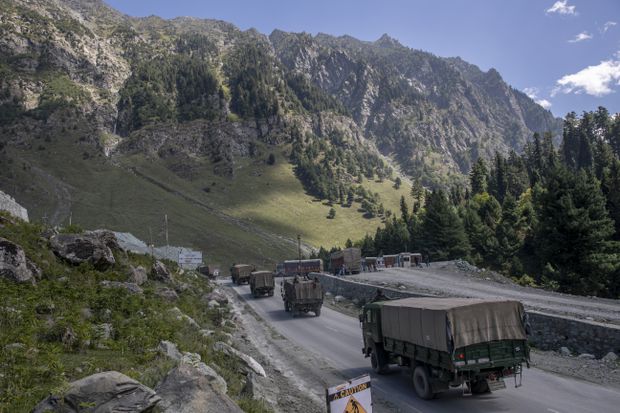
R Krishna Das
Nearly nine months after India and China got embroiled in their worst border tensions since the 1962 war, both sides began a phased disengagement from the southern and northern banks of the Pangong Tso in Ladakh Wednesday.
But can China be trusted given the past experience? “Cautious Optimism” is what most of the defence experts have opined.
China broke the news when Senior Colonel Wu Qian, spokesperson for the Chinese Ministry of National Defence, issued a written statement, saying: “The Chinese and Indian frontline troops at the southern and northern bank of the Pangong Tso Lake start synchronised and organised disengagement from 10 February… This move is in accordance with the consensus reached by both sides at the 9th round of China-India corps commander-level meeting.”
The closing remark of Qian however speak volume of the trust deficit. While it remains difficult to cancel the tense standoff and return to peace and stability once and for all, the future looks promising, Qian said.
However, experts in India’s strategic establishment said that while China had signalled some “positive notes”, it had to translate it into actions. What could not be ignored in the exercise was that the Chinese Communist Party (CCP) and not the Chinese defence ministry had to take the final call.
The northern neighbour was celebrating the CCP’s centenary and “if the PLA moved its troops back it will be a loss of face in front of the domestic audience.” Experts added that if the Chinese troops retreated from the eyeball-to-eyeball situation, they could be back at will because of the kind of infrastructure they had created in those areas.
Unless India resolved the LAC issues, it must not vacate the Kailash Range that China had been insisting on. With the Indian soldiers occupying heights at the Kailash Range overlooking the Moldo garrison of the PLA, China’s first priority would be to deny India the military advantage.
According to the disengagement process agreed to by India and China, the countries have started withdrawing their tanks and armoured personnel carriers completely from the southern bank of Pangong Tso. No soldier is being pulled back from the heights on the southern banks as of now.
The defence experts exhorted that the breakthrough could only be achieved at the diplomatic level and military talks were unlikely to yield any result. The talks were necessary to move towards a resolution but India must not hope too much because the trust deficit was high.
After all, the Galwan Valley clash that killed 20 Indian soldiers on 15 June last year took place during a verification process after both sides had agreed to disengage from the location.



